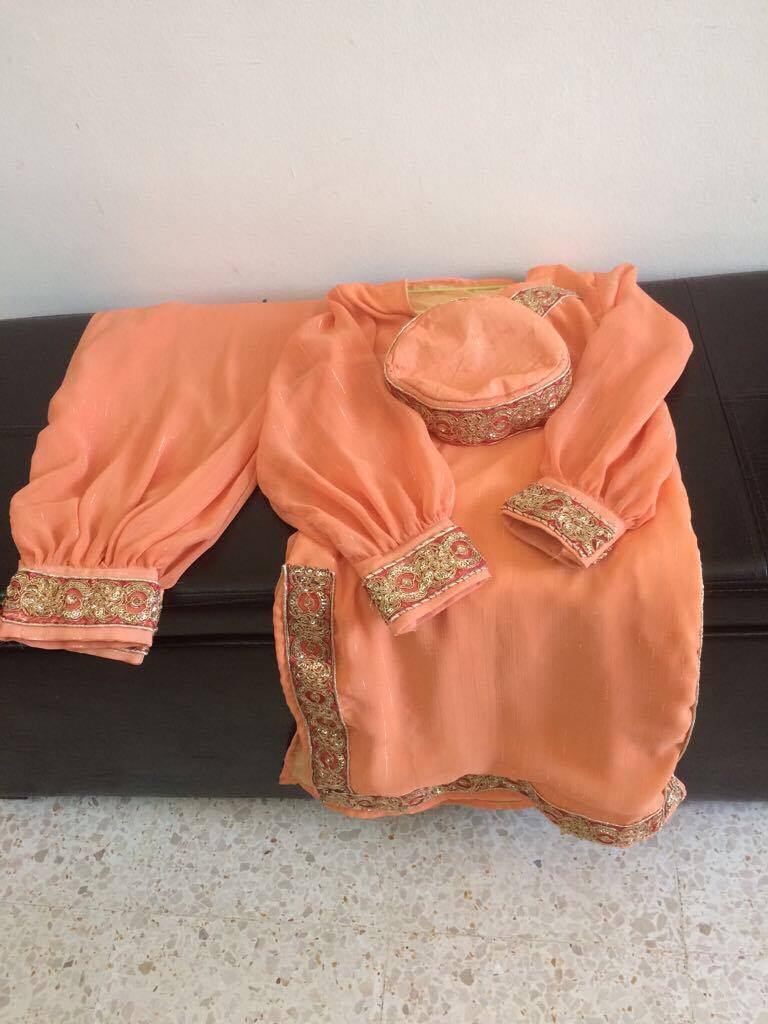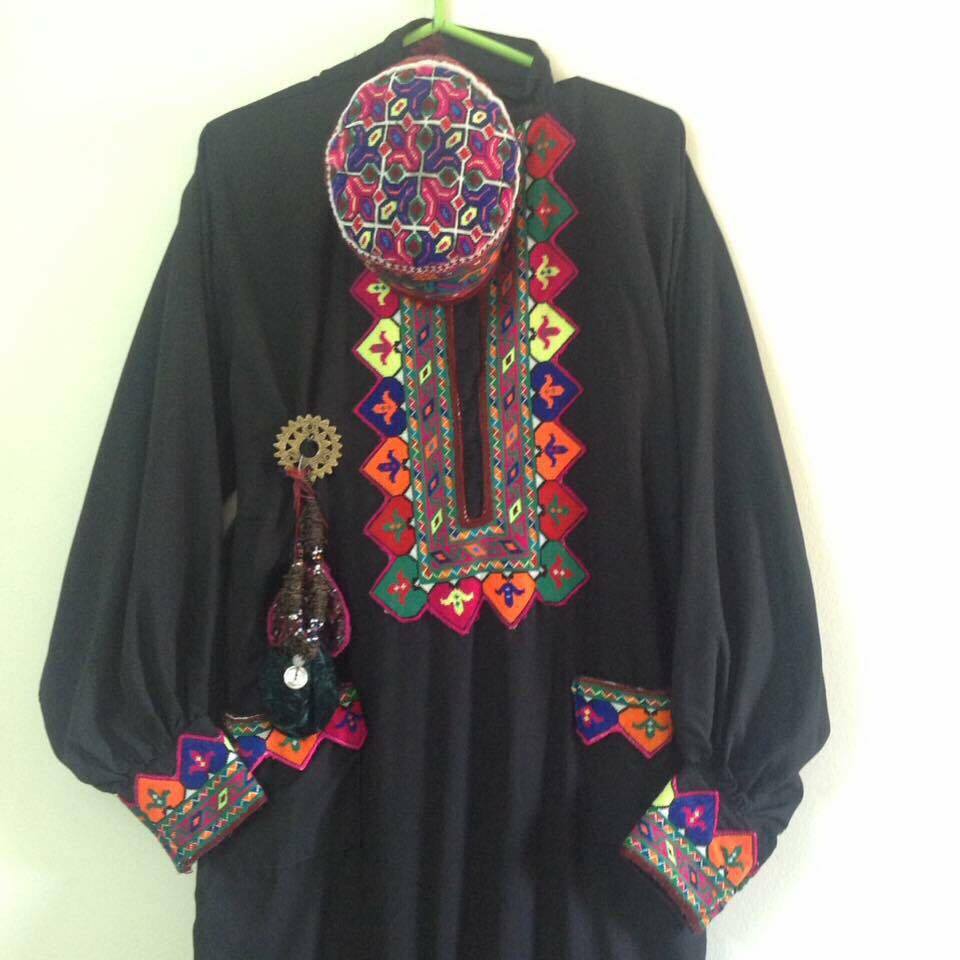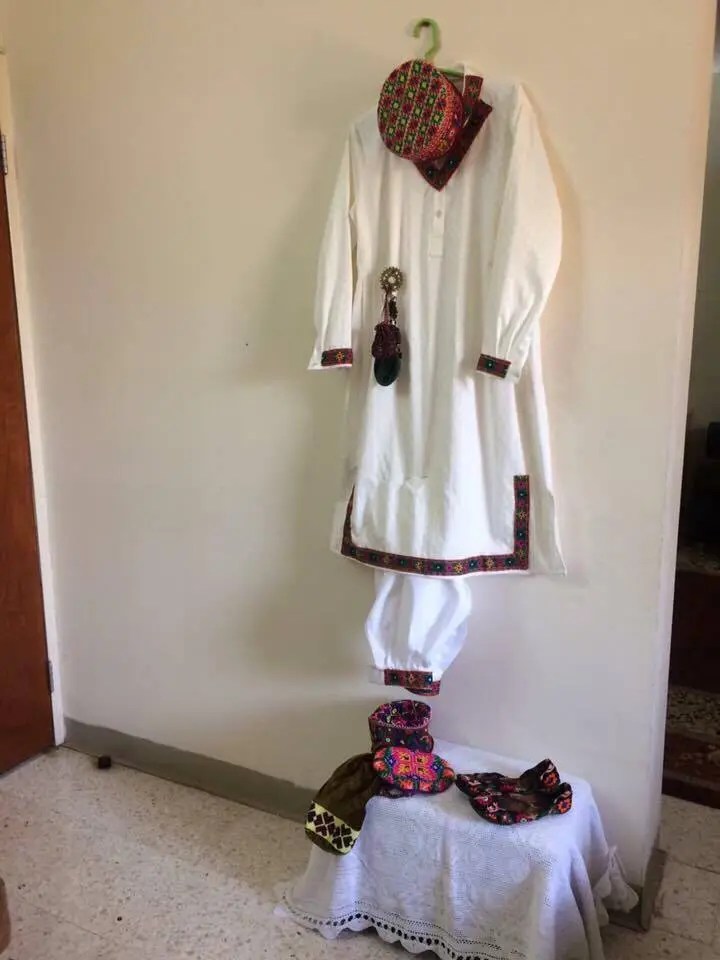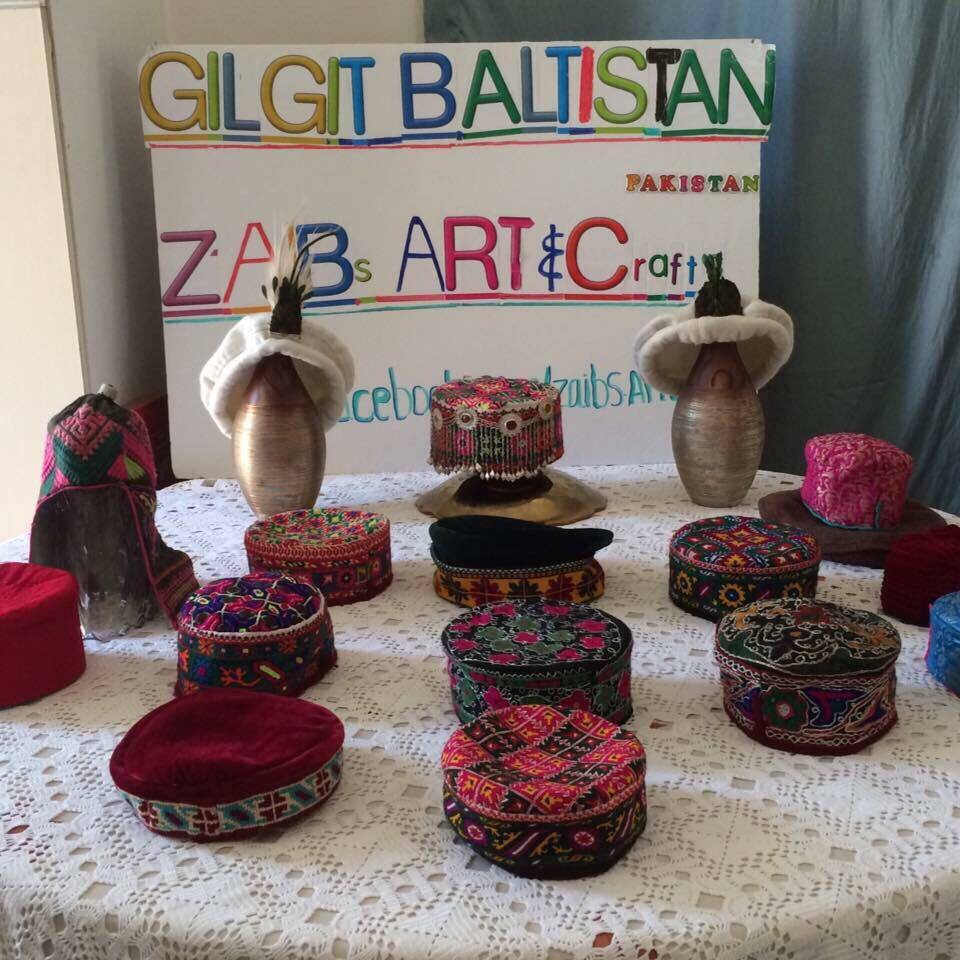Traditional women’s dresses of Gilgit-Baltistan
By Zaib R Mir
The primary purpose of the clothing was to protect people from extreme weather conditions and other harsh environmental elements. Ancient humans were covering their bodies with leaves, animal skin, fur and other materials. Reasons for wearing clothing changed over time. People started to wear cloths for decoration, tribal affiliation, and symbol of profession or rank. Archeological Research has discovered that weaving had started around 27 thousand years back. Traditional and cultural dresses provide important information and knowledge about the cultural and historical heritage of a society. Traditional dresses or clothing are influenced by geographical, religious, economical and moral factors.
Gilgit Baltistan has a diverse cultural heritage. Because of the geographic location the region traditional dress of Gilgit Baltistan has some link to the traditional dresses of central Asia, China, Iran and Turkey. With passage of time and new geographical linkage the traditional dress also gradually changed.
Wearing a traditional dress is one way to show our real appreciation for our culture and to represent human diversity. By dressing in traditional clothing we can show our interest to preserve the cultural heritage and understand the life style of our ancestors.

The name shalwar is derived from the Turkish word salvar for trouser. This was later adopted in Urdu and other local languages. The Traditional shalwar of Gilgit Baltistan is very similar to Turkish salvar. It is loose, long, baggy trouser. Traditionally, silk, cotton and velvet fabric was used. The trousers are loose but narrow and fitted around the ankles and shins. The narrow ankle part of the trousers were sometimes tucked into colorful traditional hand knitted socks. The shalwar was best designed according to local needs. Traditionally horses were used to travel from one place to others. The loose trousers were comfortable to ride on saddle horseback. The narrow part around the ankle would protect against the cold air. And the loose upper part was perfectly comfortable to ride. In addition this dress was also suitable for working in fields and sitting in traditional way in home. The loose part makes it easy for the wearer to bend while working and sitting on the floor.
Kameez ( kurtani , peeran, Cheelo)
Kameez or tunic is the upper part dress. Traditional kameez is loose fitted and heel long. The collar of the kamiz was high and was designed as a modern day man’s shirt collar. The Islamic tradition of covering the full body is fulfilled by this design. For bridal dresses colorful embroidered bands were stitched around collars and the lower end of the shirt and sleeves. A small pocket was attached in front or sides of kammeez. A fabric with floral pattern is used for kameez and plain fabric is used for trouser.
Dopata or shawl (phatek, cheel)
Dopata or shawl is an integral part of the traditional ladies dress. Different color of dopata is used. Young ladies wear bright colors while elder ladies prefer dark colors.
Traditional cap
The most elegant part of the women dress of Glgit Baltistan is the traditional cap. Various types of caps are used. The most popular cap is the beautiful embroidered Iraghi cap with traditional piece of jewel called silsila. Many other types of caps are used in various regions. Please refer to my article my cap my pride published in Pamir times.
Over time the local dress has changed considerably. The reasons for these changes are inevitable. Modernization, globalizations , regional and global influences are are the main reasons for these changes. On one hand this change is very important to keep ourselves update with modern world at the same time it is also important to keep our cultural heritage alive. We can keep these traditions alive by giving them a modern touch but preserving the actual tradition.
http://pamirtimes.net/2017/04/29/traditional-womens-dress-of-gilgit-baltistan/
Ghanche: One of the most beautiful and culturally rich valleys of Gilgit-Baltistan
Ghanche is one of the most beautiful valleys of Gilgit-Baltistan. Surrounded by lofty mountains, the valley is home to almost 150,000 people. It borders with the Xinjiang province of China in the North-East, and Ladakh area of Indian Administered Kashmir to the South. The capital of Ghanche District is Khaplu. It is believed to be among the coldest inhabited places in Pakistan; it is also known as the ‘third pole’, where temperature drops below 20 degree centigrade.
Khaplu valley and Hushe Valley are the gateway for the great Baltoro, Muztagh, and the sub-range of Karakoram that includes the mighty peaks of K2 (8,611 m), Broad Peak (8,047 m), Gasherbrums(8,000+ m) and Masherbrum (7,821 m).
Due to its lofty mountains, scenic views and rich heritage, the valley attracts thousands of tourists every year. According to the sources more than one lac domestic and international visited Ghanche in 2016.

The renovated Chaqchan Mosque stands tall in the middle of the Karakoram mountains
The first tourist point of the district Ghanche is Chaqchan Mosque. Located in Khaplu, the mosque was built by Mir Sayyid Ali Hamadani in 1370(A.D). It is one of the oldest mosques in Asia. It is one of Baltistan’s most famous landmarks and a major source of tourist attraction. The Government of Pakistan has listed the Chaqchan Mosque as a national Heritage Site. It is said that this mosque was the worship place of the Buddhists, some 700 hundreds years ago. Later, it turned into Mosque after the region’s entire population accepted Islam. The mosque consist of three floors. The top flour of this mosque is in the possession of Noorbakhshia sect ( Noorbakhshia is a sect of Islam like Sunni and shia), to which 90% of the population of the district Ghanche belongs. The Shia sect is responsible for the middle floor of the Chaqchen mosque.
The architecture of this mosque reflects the civilization of Islam. It is made of mud, stones and wood. Wood carvings adorn the inner and outer surface of the mosque.

The Khapulu Fort, which has now been turned into a hotel operated by Serena Hotels
The second major tourist attraction in the valley is the Khaplu Fort, locally known as Yabgo Khar. The Khaplu Fort was built in 1840 by the Yabgo Raja Daulat Ali Khan of Khaplu after the Dogra of Kashmir who captured the region decided to move the seat of government from the old fort. The fort is considered to be an architectural heritage and a tourist attraction, as it has served as a royal residence. Earlier, the fort stood in a very vulnerable conditions. However, it underwent a restoration, carried out by the Aga Khan Trust for Culture under the Aga Khan Historic Cities Programme in 2005. The renovation work was completed in 2011. The fort now houses a hotel operated by Serena and a museum depicting the history and culture of Baltistan.
At the distance of nearly 55 Km from Khaplu town, a hot spring is situated in Kondus village. The water of the this spring is so hot that eggs can be boiled in it.

Water coming out from the hot spring which the locals believe has medicinal properties
A material locally called Phultoq is found in the surrounding of the hot spring, which is used by the locals as a medicine, mixed with tea, for curing blood pressure, and other diseases.
Ghanche also has many lakes, glaciers, lush green pastures, valleys and plateaus.
Locals celebrate several festivals, like Jashn-e- Navroz, Spring Blossom Festival, Jashan-e-Ghanche, Rock Climbing Festival, Mehfil-e-Mushaira, Cultural Shows, Musical Night, Skin Chan Bargum and Mindo Ltanmo, to name a few.
The more interesting aspect of life in Ghanche is that the crime rate is zero. No murders or major crimes are reported for decades. of this valley is that the crime rate is zero; no case of murder has been reported in the region for the last several decades. The people of this region are very peaceful, polite, hospitable, sociable and beautiful. Although, the literacy rate of this region is higher as compared to other districts of Pakistan, but the youth of this valley are still deprived of higher education facility.
http://pamirtimes.net/2017/05/02/gh...-culturally-rich-valleys-of-gilgit-baltistan/



















